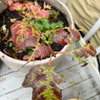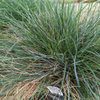hurricanes, tornadoes, earthquakes, floods, thrips
emmyt
12 years ago
Related Stories

MOST POPULARWhat to Do After a Hurricane or Flood
How you treat your home after a natural disaster can make all the difference in its future livability — and your own personal safety
Full Story
ARCHITECTURE4 Things a Hurricane Teaches You About Good Design
When the power goes out, a home's design can be as important as packaged food and a hand-crank radio. See how from a firsthand account
Full Story
DISASTER PREP & RECOVERYHouzz Tour: Modern Farmhouse Emerges From Hurricane Sandy Devastation
A homeowner loses her cottage but gains a new energy-efficient, low-maintenance home
Full Story
ORGANIZINGGetting Ready for the Hurricane: What's on Your List?
Tell us what you do to prep for emergencies like a hurricane
Full Story
DISASTER PREP & RECOVERYHouzz Tour: Family Rebuilds Home and Community After Hurricane Sandy
This restored coastal New Jersey house — now raised 9 feet off the ground — offers inspiration for neighbors considering a return
Full Story
DISASTER PREP & RECOVERYFamily’s New Style Rises in the Aftermath of a Flood
After their damaged walls are demolished, homeowners realize they like the open space and decide to keep it
Full Story
HOUZZ TOURSMy Houzz: Super Efficiency and Serenity Near the Florida Surf
It can withstand a hurricane and earned LEED Platinum certification, but this island home knows how to chill too
Full Story
HOME TECH7 Ways to Charge Up and Connect After Disaster
Products and tips for communicating and keeping essential items running till the power's back on
Full Story
CONTRACTOR TIPSBuilding Permits: 10 Critical Code Requirements for Every Project
In Part 3 of our series examining the building permit process, we highlight 10 code requirements you should never ignore
Full Story
LIFEHow to Prepare for and Live With a Power Outage
When electricity loss puts food, water and heat in jeopardy, don't be in the dark about how to stay as safe and comfortable as possible
Full Story








Kimmsr
emmytOriginal Author
Related Professionals
Arlington Landscape Contractors · Beverly Hills Landscape Contractors · El Mirage Landscape Contractors · Golden Gate Landscape Contractors · La Vista Landscape Contractors · Lady Lake Landscape Contractors · Las Vegas Landscape Contractors · Placerville Landscape Contractors · Porterville Landscape Contractors · Riverhead Landscape Contractors · San Benito Landscape Contractors · Thonotosassa Landscape Contractors · Waltham Landscape Contractors · Woodland Landscape Contractors · Hueytown Landscape ContractorsKimmsr
emmytOriginal Author